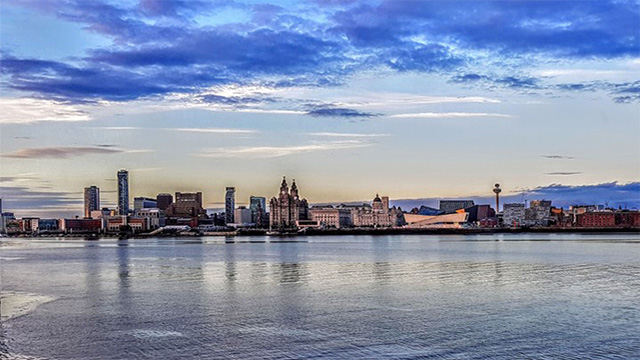
1 Urban farms – On a grand scale, these could include such things as underground farms, like the one located in a disused bomb shelter under London. On a smaller scale, they include beehives located on roofs, such as the 300-strong colonies to be found in Paris. City dwellers can take it into their own hands as well; Berlin alone has 10 large urban agriculture projects, including Allmende Kontor – an urban garden on the grounds of Berlin Tempelhof airport. Where aircraft once took off during the Berlin airlift of 1948-49, local residents now grow fruit and vegetables. The aim of these initiatives is equal parts sustainability and necessity, with the UN predicting dramatic food shortages by 2025. Could this be a new use for disused warehouse space in cities?
2 Cat cafés – These include coffee shops full of our feline friends, a trend that started in Taiwan and spread to Japan and Europe, and any new trends in food and beverage. Globally, we are eating out more; data from the NPD Group predicted visits to food-service companies in the UK would increase by 100m this year, and a recent poll of US consumers found they were spending more on eating out than on groceries. F&B is big business, but in cities, it is not enough to feed your customers; diners expect the newest food trends and experiences. So investment in the next broth bar/karaoke hybrid could be next.
3 Trendy leisure offers – As with what they eat, urbanites demand the latest in entertainment. Perhaps instead of an urban garden, you should transform that disused warehouse into a circus school or trampoline park. Leisure trends are constantly changing, but the ability to entertain young urban populations can deliver high returns. Just make sure you stay ahead of the trend. Sandbox fitness anyone?
4 Markets – They may have been around since antiquity, but city dwellers are rediscovering their love of markets. As with urban farms, this is about reconnecting people with the source of their food, but it is also about placemaking within a city. From small local farmers’ markets, found in most cities, to tourist locations such as Mercado de San Miguel in Madrid or Viktualienmarkt in Munich, markets matter. They can present development potential, as with Spitalfields in London, E1, or can simply be a central hub, often increasing the value of the real estate around them.
5 Tourist attractions – We are not talking stuffy old museums here. In a recent study conducted by the US Travel Association and the US Department of Commerce, shopping and dining consistently ranked as the top two favourite activities by the travellers surveyed. It is not just locals frequenting your cat café: the impact of retail tourism cannot be understated, with more than 1.7m Chinese retail tourists visiting France in 2015. Just like designer outlet malls near historic sites in Italy, large shopping centres, such as the Edinburgh St James scheme that is to be delivered in 2020, are set to become tourist attractions in their own right.
6 Transport hubs – Or perhaps, more accurately, transport hubs of the future. The way we use transportation in cities is changing. In some US cities, Uber is currently testing driverless cars; in Switzerland some cities are running e-bike sharing schemes to improve the attractiveness of cycling in a mountainous country, and are even experimenting with cargo bikes. Traditional transport hubs will retain their importance, and improvements such as Crossrail in London will only increase our use of these vital services, so we predict these new “hubs” will become more important. From driverless car parks and transport pod stations to shared bike docking stations, city dwellers and the real estate that surrounds them is set to change dramatically in the future.
By TH Real Estate
11 reasons to invest in Italy
1 The Italian economy held its place as the third largest in the eurozone in 2016, with traction being maintained as employment picks up at the strongest pace seen for 10 years, supported domestic consumption.
2 The country’s formidable brand continues to attract foreign investment and drive exports, with a strong showing in high value-add industries and some of the most valuable luxury brands in the world.
3 Multinational companies showed a renewed appetite for Italy in 2016, with new investment in the country secured from Amazon, Ryanair and Apple.
4 In fact, the “Made in Italy” brand ranks third globally in terms of its prestige, with record exports hitting €400bn (£341bn) in 2016. Drawn by this success, international names continue to enter the retail market and real estate investors are focusing on the sector, with volumes growing by 9.5% from last year, bucking the downward trend seen for Europe.
5 Italy is also the fifth-largest global tourism market and judged to be the most culturally rich country in the world, according to UNESCO.
6 The country is showing more signs of resilience as the new government continues previous efforts to drive forward reforms. The possibility of an early election this year may bring further clarity as to the future direction of the country.
7 Recent tax regulations and reforms have enhanced transparency in the Italian market, encouraging flexibility and improving business processes through simplified policies and tax breaks in addition to improvements in regulatory frameworks.
8 Italy has climbed up the rankings for ease of starting a business, owing to government-led improvements in access to the internet. Milan ranks before Helsinki and Munich on the monitor of European start-up hubs.
9 Investment volumes exceeded the €10bn mark for the second consecutive year – 2016 was the second-highest year on record for CRE transactions, as overseas buyers saw the potential to access quality stock and maximise growth.
10 While the cycle in many European markets is maturing, Italy is a an earlier stage in the cycle, which offers opportunities. Confidence in the market was demonstrated by a diverse mix of new entrants in 2016 including US private equity, Middle Eastern sovereign wealth and Asian institutional investors, encouraged by the stock on offer and the country’s improving fundamentals.
11 The banking sector represents a major downside risk in the short-term, but the large stock of non-performing loans is also a source of opportunity for investors that is growing fast as reforms open up the sector.
By David Hutchings, head of EMEA investment strategy, Cushman & Wakefield

Four tips for investing in Asia
1 Take advantage of a good investment climate
Positive economic and property fundamentals continue to make for an active investment marketplace, sustaining institutional interest. With asset prices expected to rise in most markets in 2017, there is potential for yields to compress moderately. However, still-accommodative monetary conditions will maintain spreads and sustain favourable risk-adjusted returns.
2 Remember that cross-border investment remains strong
The proportion of cross-border activity in commercial real estate reached a high of 34% in 2016, with 60% of spending coming from within the region. This trend will remain intact, with new capital control measures in China not expected to deter its outbound focus. Having overtaken the US as Asia-Pacific’s top investor, China will continue to maintain a hold on the investment landscape, with Singapore remaining another key capital source.
3 Keep in mind that there are limited assets for sale
Dry powder targeting the region has reached a record US$33bn (£26bn), slowing the raising of fresh capital as investors shift to deploying funds. With competition for assets to stay elevated, investible stock will continue to be in tight supply. However, fund expiries from the 2006-09 vintage and an expanding real estate universe will provide opportunities into the medium term.
4 Make sure you are looking in the right places
Consider secondary cities and emerging markets, which will benefit from the long-term structural drivers of the Asia Pacific economy. And the birth of new REIT markets will herald a new era for real estate investments. Core locations negotiating the cyclical downtrend and decentralization will offer core and core-plus opportunities.
By Sigrid Zialcita, managing director, research, Asia Pacific, Cushman & Wakefield
Four tips for navigating down under
1 Foreign investment is gaining momentum
Over the 2014-16 period, overseas entities committed A$41bn ($31bn), accounting for 44% of the national volume. Offshore investors have been behind many of the largest single-asset and portfolio deals, including CIC purchasing the national Investa Office Fund portfolio and ARA Asset Management acquiring the Southgate Complex in Melbourne.
2 Look out for sectoral and geographical diversification
Core assets have become more tightly held. This has seen a reduction in the proportion of volume accounted for by CBD office assets, with greater attention on fringe office markets as well as the retail and industrial sectors.
3 Be aware of changing net purchasing activity
Tightening available stock has seen some investors, such as some AREITs, choose to sell non-core assets and recycle the capital into new developments and refurbishments. In contrast, unlisted funds and investment managers were the largest net purchasers, acquiring a range of assets to meet their various mandates.
4 Look beyond the core
Attractive risk-adjusted returns can be found in Sydney and Melbourne metropolitan markets. Brisbane CBD office also provides interesting core-plus opportunities.
By James Quigley, head of capital markets, Australia and New Zealand, Cushman & Wakefield
Top three hot trends for investors in the Middle East real estate market
1 The prolonged period of low oil prices has had a negative impact on the domestic market, with lower growth forecasts, industry consolidation and increased fiscal stress (subsidies being lifted and taxes being implemented). Most Middle Eastern governments are entering a period of proactive economic management.
2 Brexit, the migrant crisis, political volatility and increased regional instability have led real estate investors to reconcile portfolios and consider global allocations with renewed interest for core markets with growth potential. Most Middle Eastern investors are overweight Europe and underweight Americas and Asia Pacific – a global rebalancing is expected.
3 Strategic partnerships are sought across the real estate spectrum, bringing together entities sharing a similar long-term view that can leverage synergies in order to implement a co-ordinated investment approach across the globe – for example, QIA and Brookfield. We expect more of these joint ventures to emerge across the medium term.
By Yahya Abdulla, head of Middle East desk, Cushman & Wakefield











